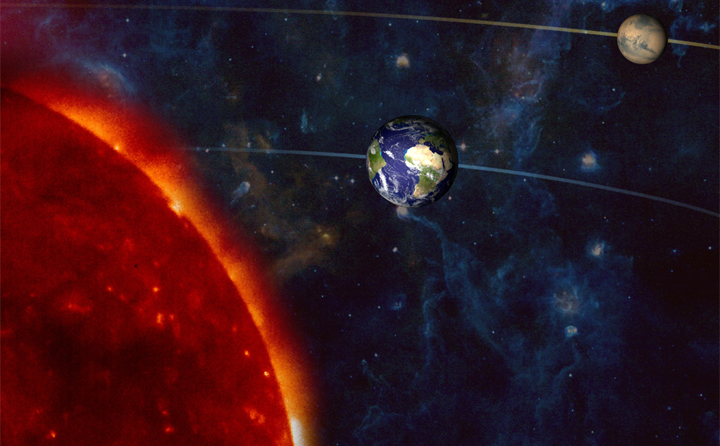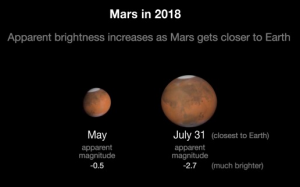
Tonight’s night sky will feature Mars Opposition and it should be visible in fair or clear skies tonight across much of the United States where the weather is cooperating. According to NASA, uring Opposition, Mars and the sun are on directly opposite sides of the Earth. In general terms, Mars rises in the east just as the sun sets in the west; after staying up in the sky the entire night, Mars sets in the west just as the sun rises in the east. Since Mars and the sun appear on opposite sides of the sky today, Opposition occurs. If Earth and Mars followed perfectly circular orbits, opposition would be as close as the two planets could get. Mars should appear as a very bright, orange/red star.

While Mars will be visible in the United States, a long total lunar eclipse visible in a large part of the rest of the Earth tonight. People in South America, Europe, Africa, Asia, and Australia will be able to view the eclipse, while those in North America will be treated to both the Mars Opposition and the Moon. Tonight’s lunar eclipse is the longest of the century, lasting one hour 43 minutes.
The Mars Opposition last occured in May 2016. It won’t occur again until October 2020.
Night sky watchers will be treated to another spectacular sight from Mars later this month. On July 31, 2018, Mars will be closer, and therefore brighter, than it has been since 2003, and closer and brighter than it will be again until 2035. On the 31st, Mars will be at a distance of 35.8 million miles from Earth. While Mars will be visible with the naked eye in cloud-free skies, a good telescope should also give you a glimpse of the polar icecaps of the red planet.